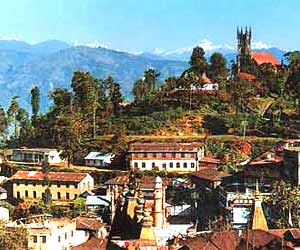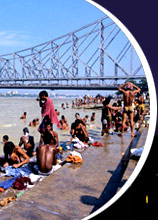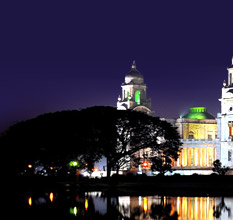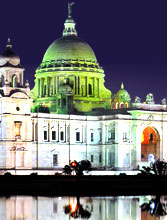 Flaunting blissful beauty and old world charm, Kalimpong is one of the most striking and outstanding hill stations in the northeastern region of India. The town is rich in color and fragrance, thanks to the stunning flora. Snuggled away in the mountain ranges of the eastern Himalayas, Kalimpong is a secluded retreat, perfect for travelers seeking peace and serenity in the lap of nature. Today, a well known hill station of the Northeastern India, its past was a quite humble one. In the following lines, we have provided detailed information on the history and origin of Kalimpong.
Flaunting blissful beauty and old world charm, Kalimpong is one of the most striking and outstanding hill stations in the northeastern region of India. The town is rich in color and fragrance, thanks to the stunning flora. Snuggled away in the mountain ranges of the eastern Himalayas, Kalimpong is a secluded retreat, perfect for travelers seeking peace and serenity in the lap of nature. Today, a well known hill station of the Northeastern India, its past was a quite humble one. In the following lines, we have provided detailed information on the history and origin of Kalimpong.Pre Independence Era
The history of Kalimpong dates back to the 18th century. Known as Dalingkot then, the region was ruled in succession by the Sikkimese and Bhutanese kingdoms. It was in 1706 that the King of Bhutan won the territory from the Sikkimese monarch, and christened it Kalimpong. Used as the forward position of Bhutanese, the small town was sparsely populated at that time, with Lepcha being the indigenous or native community. Migrants of Bhutia and Limbu tribes also lived in the area. In 1780, Gorkhas invaded and conquered Kalimpong.
It was after the 1864Anglo-Bhutan War, with the signing of the Treaty of Sinchula in 1865, that Bhutanese ceded Kalimpong to the British East India Company. During that time, the town was nothing more than a village, home to just two or three families. A year later, it was added to the district of Darjeeling, thereby making it is a subdivision of the latter. The alpine weather of this scenic place compelled the British to make it a summer escapade. An alternative option for Darjeeling, Kalimpong soon became a favorite tourist spot. Its nearness to the Nathula and Jelepla passes was an added bonus.
With so many advantageous characteristics, Kalimpong was on the threshold of development. It became an important trading outpost, with furs, wool and food grains being the main exchange items between India and Tibet. The increasing commercial activities attracted large numbers of migrants from Nepal, thereby enhancing both the population and economic prosperity of the once 'hamlet'. Scottish missionaries brought with them development in the education sector as well. They constructed schools, institutions, orphanages and welfare centers in the area. Kalimpong, during this phase, was experiencing an expansion.
Post Independence Era
In the post-Indian independence era, Kalimpong became a division of West Bengal state. In 1959, with China's invasion of Tibet, Buddhist monks fled to Kalimpong and established their monasteries. It was during this time that the town experienced religious and spiritual growth. The monks brought with them rare scriptures and traditional cultures. However, the forward growth of Kalimpong's economy came to a halt with the Sino-Indian War. The war led to the permanent closure of the Jelepla Pass, thereby curbing the trade between Tibet and India.
In the latter half of the 19th century, revolt struck Kalimpong, as the inhabitants demanded a separate state of Gorkhaland and Kamtapur. The riots between the West Bengal government and the Gorkha National Liberation Front (GNLF) were so strong that Indian Army was called upon to maintain law and order. The forty-day riot led to the formation of Darjeeling Gorkha Hill Council, a body that was given semi-autonomous powers to govern the Darjeeling district. While the demand for Gorkhaland still continues, there is no violence and the magnificent and mystical beauty of Kalimpong continues to allure tourists and travelers alike.









